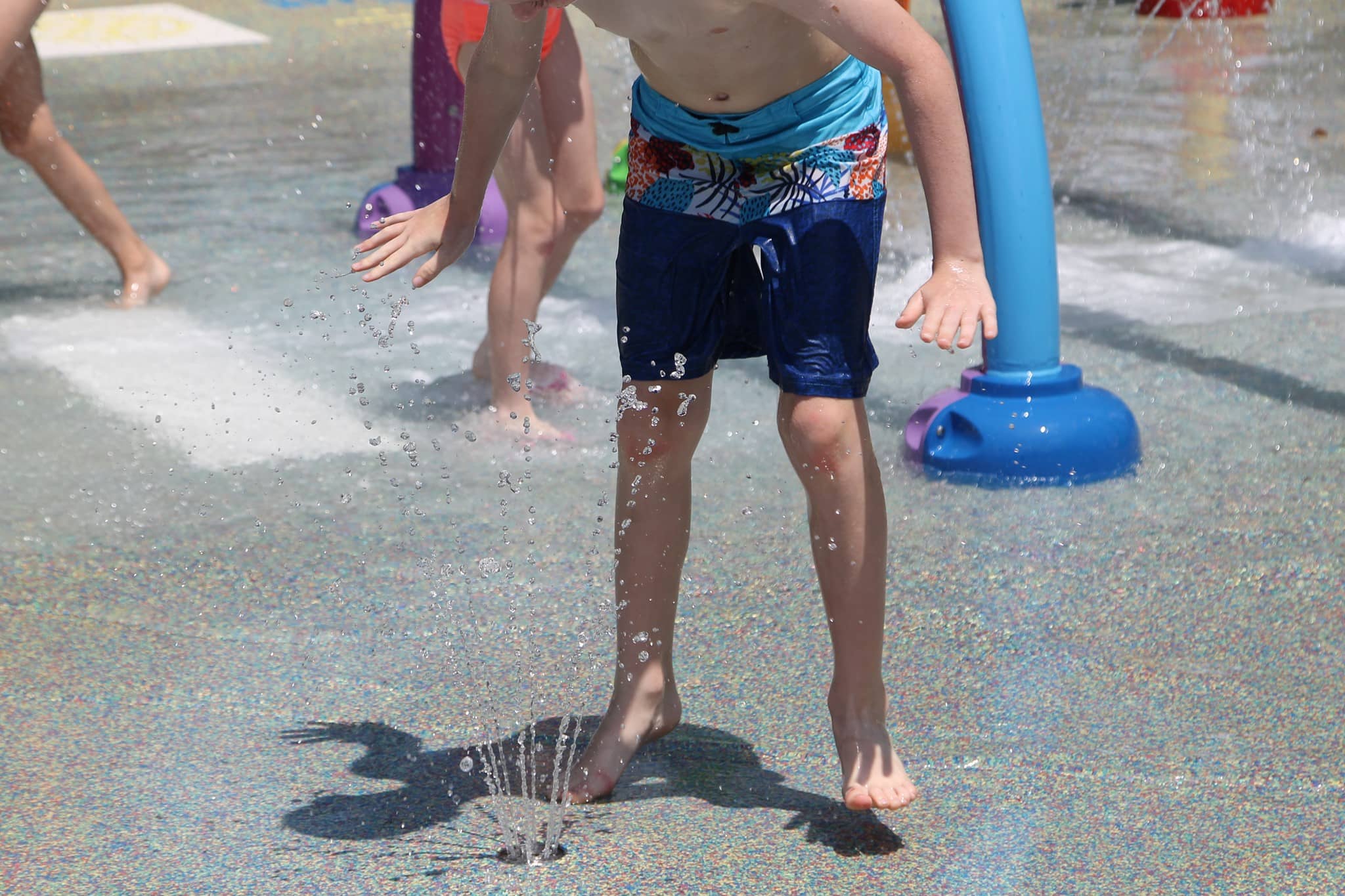The Ultimate Guide to Splash Pad Flooring
Splash pads have become an increasingly popular attraction in community parks and recreational areas. Their inclusive characteristics and multi-generational appeal cater to a wide audience, allowing municipalities to provide an enchanting water play area with interactive water features and ground sprays that require minimal staffing. In fact, water play areas are the number one most planned addition to facilities, according to a study conducted by Recreation Management Magazine in 2023. For municipalities, choosing the right flooring for your splash pad is crucial for ensuring both safety and long-term durability. In this article, we will share our recommended splash pad flooring options as well as the pros and cons of each.
Brushed Concrete



Brushed concrete is appealing to municipalities for two main reasons, it’s easy to maintain, and it’s inexpensive. Brushed concrete is relatively simple to clean. Routine sweeping and occasional pressure washing are usually enough to keep it in good shape. Concrete is also an extremely robust surface, handling a lot of foot traffic and play without showing significant wear and tear. Because this surfacing option is very affordable, municipalities use this savings opportunity to allocate funds to other features and amenities, such as benches, shade structures, water fountains, etc. Unfortunately, brushed concrete is not forgiving to slip and fall accidents. This surfacing can become slippery when wet, creating a potential for skinned knees or elbows due to the material's harshness on the skin.
Painted Concrete

A step above brushed concrete is painted concrete. Painted concrete provides aesthetic appeal and can be customized to blend seamlessly with its surroundings. Special paints, such as Cool Deck Pool Coating, are available that can stay cool under the sun, offering a more comfortable surface for users.
Rubberized Flooring




Available in various colors, rubberized flooring allows for more creative and visually appealing designs. Rubberized flooring also offers a softer surface that can help reduce the impact of falls, making it a safer option for children. This surfacing option has two methods of installation and can either be sprayed or rolled on. Both options provide a seamless finish, with the flooring appropriately laid out and bonded to the surface.
Interlocking Tiles


Interlocking tiles provide an excellent opportunity to create interesting designs with tiles of different colors and shapes. While this surfacing option generally has a high up-front cost, damaged tiles from UV or chlorine exposure can be easily replaced without needing to tear up the entire floor. By using a mix of colors, you can easily replace damaged tiles without worrying about an exact color match, making maintenance cheaper. LifeFloor provides splash pad flooring solutions for this type of water play area project.
Choosing the right flooring for a splash pad is crucial. Each material has its own set of advantages and drawbacks, but understanding these can help parks and recreation professionals make an informed decision. Whether you prioritize safety, maintenance, aesthetics, or budget, there is a splash pad flooring option that's right for your community.
*AquaWorx is not a splash pad surfacing manufacturer. For additional information on splash pad surfacing and for assistance finding a recommended manufacturer, please contact us.
Need assistance with a current splash pad project?

